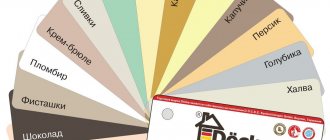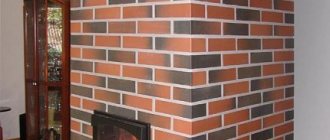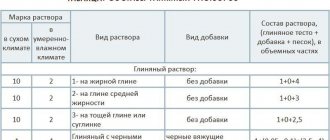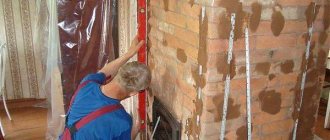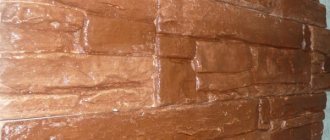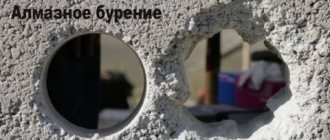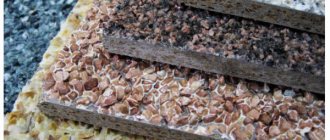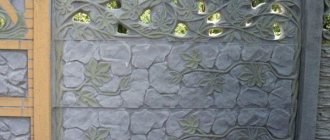Why apply varnish to the stove?
Experienced experts recommend always applying a protective varnish to the brickwork.
This is not only done for the purpose of beautiful design. After all, such a coating is resistant to high temperatures and reliably protects the heating device from mechanical and chemical damage. Transparent heat-resistant varnish for a brick stove has the following advantages compared to other coatings:
- Resistance to high temperatures. Thanks to this characteristic, the varnish coating will last for a long time, despite high temperatures.
- Improves brick resistance to abrasion. The coating on which such a product is applied will be protected from mechanical abrasion.
- Prevents washing out of oven seams.
- Helps strengthen the entire masonry.
- Increases moisture-repellent characteristics. Thanks to this, you do not have to worry about water or other liquid damaging the surface while using the oven device.
- Provides resistance to aggressive substances. Heat-resistant varnish for brick stoves allows you to clean the stove surface from dust, dirt and stains using various detergents. You can be sure that the coating will not be damaged.
- Gives a special shine. Even the color of an ordinary brick can reveal itself in a new way if it is coated with thermovarnish.
Examples of stove varnishing:
Photo 1
Photo 2
Material selection
Since the oven and its component elements are constantly exposed to high temperatures, the varnish must meet the following requirements:
- heat resistance;
- heat resistance;
- moisture resistance;
In addition, the varnish should:
- help prevent washout of furnace seams;
- help strengthen the masonry;
- protect the firebox from penetration of moisture and condensation;
- prevent premature cracking and destruction.
The most popular brands are KO-85 and KO-815. They can be used both outdoors and indoors at air temperatures down to -35 degrees. Brick, concrete, stone, plasterboard, wooden surfaces, and paving slabs are suitable for their application.
Characteristics of KO-85:
- Protects the external and internal cladding and masonry of stoves.
- Gives water-repellent properties to the seams of a clay oven, preventing them from drying out and crumbling.
- Strengthens the seams of masonry of stone, brick, and concrete stoves.
- Can be used at sub-zero temperatures.
- An ideal solution for stoves in baths and saunas.
- When using it, no peeling film is formed.
- Quick drying.
- There is no smell after 30 minutes.
- Can be used to protect the masonry of a stove or fireplace at temperatures from -40 to +350 degrees.
- Prevents moisture absorption and swelling of bricks between fireboxes.
Characteristics of KO-815:
- They cover the surfaces of the firebox inside all types of stoves, both indoors and outdoors.
- The varnish protects metal, concrete, glass, ceramics.
- Gives hydrophobicity, frost resistance and corrosion resistance to surfaces.
- Dries completely at temperatures above 150 degrees Celsius.
- Not subject to peeling later.
- Protects brickwork at temperatures from -40 to +350 degrees.
- Can withstand particularly aggressive conditions.
- Prevents fraying and cracking of brick kiln seams.
- Like KO-85, it protects against moisture absorption and swelling of bricks between fireboxes.
As you can see, varnishes KO-85 and KO-815 are almost identical in their technical characteristics, but the price of the latter is still more expensive.
What kind of varnish can be used to coat a stove?
When choosing, you should pay attention to the following characteristics:
- The heat resistance indicated on the packaging should be approximately 200-250 degrees. Varnish that can withstand temperatures much lower can crack when fired and ruin the coating.
- The packaging must be marked as moisture resistant. In this case, you will protect the oven from mold or mildew.
- Thermovarnish for brick stoves must have a high degree of adhesion. Thanks to this, it penetrates deep into the pores of the brick and provides reliable protection and resistance of the structure to external irritants.
- The varnish must contain acrylic. This will make the layers dry faster.
- The appearance of the varnish is a transparent viscous mass. If the varnish does not have a very transparent structure, then the appearance of the oven device may not change for the better.
There are several varieties of heat-resistant varnishes that have long won the trust of stove and fireplace owners. The most famous such products:
- "KO 85". These products are characterized by a high degree of heat resistance. They can withstand temperatures up to 300 degrees. Thanks to this, their scope of application is not limited to household use: they can also be used in industry for processing various parts of equipment that become very hot. Thanks to the good formula, the composition is homogeneous and easy to apply to the surface using various tools. The service life of such a coating is approximately ten years.
- "KO 815". Heat-resistant varnish that can even be used to paint the internal parts of the stove. It is only heat-resistant, but also frost-resistant. But one of the inconveniences that may arise during the coating process is the mandatory presence of infrared paws. Without their help, the varnish layer will not harden.
- "Siltek-1". A newer coating, which has excellent heat-resistant and moisture-resistant abilities, penetrates well into the pores of the brick. Gives the coating a beautiful even shade and shine. But such a product requires application in three layers, which slightly increases consumption and additional financial costs.
Popular brands:
- TERMO ES-13 “Wet stone”. Packaging – 3 l. Heat resistance up to 300 degrees. Price – from 3000 rub.
- VD-AK-001K “Superdecor”. Weight – 10 kg. Withstands temperatures from -70 to 190 degrees. Price – from 4000 rub.
- Varnish KO-815 “Spectrum”. Weight – 22.5 kg. Withstands temperatures up to 550 degrees. Price from 8000 rub. per package.
- Varnish KO-85 “Spectrum”. Weight – 0.8 kg. Withstands temperatures up to 250 degrees. Service life – up to 15 years. Price – 600 rub.
Features of varnish coating
Yes, the process of building a high-quality stone stove in a house is quite complicated. However, no less attention should be paid to the moment of cladding the structure. It is very important that the heating device fits into the interior of the room as much as possible. This will help create additional comfort and coziness. Some people use finishing materials for this, while professionals go further and coat the surfaces of the stoves with varnish.
The peculiarity of brick is that it does not deform for many years, while being resistant to high temperatures. Regardless of the type of fireplace structure, its surface will heat up, filling the room with a comfortable temperature.
Taking these characteristics into account, manufacturers offer a special varnish for brick ovens, which differs significantly from the standard material. Those homeowners who have tried to open the surface of a structure with ordinary paint or varnish know firsthand how quickly the material loses its primary properties.
Today, various modern technologies are used in the production of topcoat varnish for surfaces that emit high temperatures. Among the constituent components of the material, you can find organosilicon elements that have the ability to dissolve in an oil environment, as well as a special impregnation, which gives the varnish the appropriate properties.
The difference between heat-resistant varnishes and regular ones is as follows:
- The level of grip increases.
- The material dries quite quickly.
- No film is formed that will peel off in the future.
- Increased level of resistance to heat.
- Deep penetration into the porous structure of the brick.
Experts in the construction of stoves also note that fireplace varnish dries very quickly, and the higher the temperature, the less time it will take. The first layer of material at 18°C in the room will dry out after 60 minutes. Thanks to this, a sufficient number of layers of material can be applied in one day of light.
The presented material is classified as heat-resistant. To confirm this, it should be noted that the temperature the varnish can withstand without losing its original qualities can reach 250°C degrees.
It should be noted that heat-resistant varnish must be applied to the structure to reduce the level of mechanical friction.
How to make heat-resistant varnish for the stove with your own hands?
This product does not have to be purchased in a store. You can do it yourself. To do this, you just need to purchase a few components:
- brick dust,
- raw egg white,
- milk.
To create heat-resistant varnish for the stove at home, mix everything in a 1:1 ratio. For 1 sq.m. oven surface you will need about 5-6 egg whites.
Instead of brick polish, you can use tooth powder, this way you will get a white varnish color.
You can apply homemade varnish using a brush, or it is better and more convenient to use a sprayer.
Instructions for using varnish
For brick kiln
- Before starting work, you need to prepare the tool. Heat-resistant stove varnish can be applied using a brush or spray. You will also need protective equipment: gloves, a respirator and additional clothing.
- The brick surface must be prepared. To do this, you need to putty all the cracks and irregularities, then remove dust, dirt, and grease from the stove using detergents. Before applying the varnish, you need to thoroughly dry the surface and then treat it with a solvent.
- Next you can start applying the varnish. It is better to follow the instructions on the package. But experts advise applying the composition in several layers. This way you can achieve a perfectly smooth and more reliable coating.
Furnace varnishing
The varnish dries very quickly, but to be safe, it is better to refrain from heating the stove for several days after applying the composition. After applying the composition to the surface, it is recommended to ventilate the room for several hours.
For metal furnaces
If your stove is made not of brick, but of metal, then the coating sequence will be slightly different at the initial stage:
- Clean the surface of the previous coating using a brush or other tools, and only then proceed to solvent treatment.
- Next comes the process of applying varnish in several layers and drying them.
Applying varnish to a metal stove
